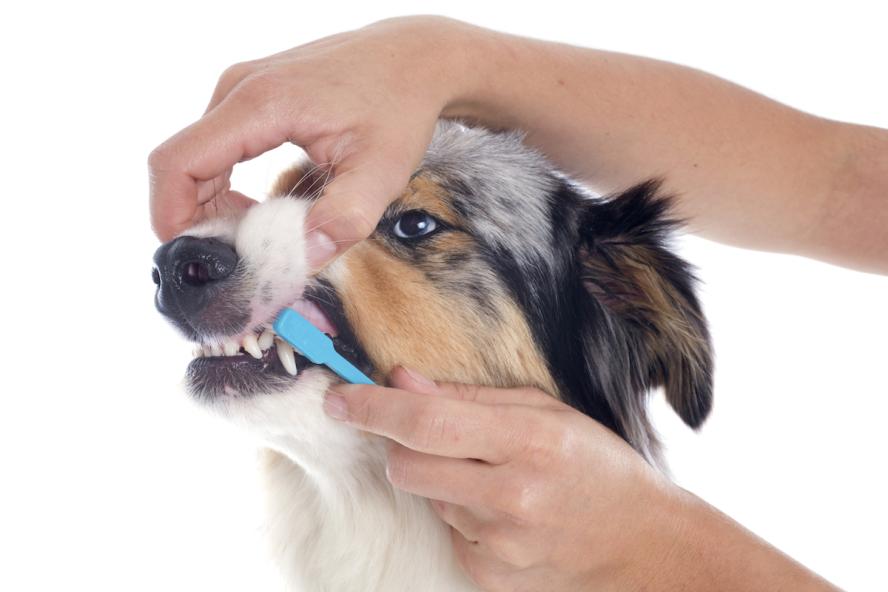-
About
- Leadership & Faculty
- News & Events
-
Academics
- Graduate
- Advanced Clinical Training
- Continuing Education
- Academic Departments
- Academic Offices
- Simulation Experiences
-
Student Life
- Offices
-
Research
-
Hospitals & Clinics
- Emergency Care
- Hospital Services
-
Community Outreach
- Volunteer
Pet Dental Health: Fact or Fiction?
Ask the Expert

Properly caring for our pets requires time, patience, and knowledge. Below, experts from Cummings School of Veterinary Medicine separate facts from fiction regarding some often heard advice about pet dental care.
“Doggy breath” is normal – FICTION – Doggy or kitty breath is not normal. In fact, it can be a sign of serious trouble in your pet’s mouth. Periodontal disease, tooth abscess and cancerous oral tumors can have a foul odor. If you notice a change in your pet’s breath, have a vet check it out right away. As with most conditions, finding and treating it early is key to a speedy recovery.
Eating dry food is better for their teeth – FICTION – It’s true that in the past veterinarians thought that the crunchy texture of dry kibble was better for teeth than wet food. We now know that kibble and wet food both contribute to the development of plaque (the slimy coating you feel on your teeth if you haven’t brushed them). However, there are specially formulated dry dog and cat foods that are designed to remove dental plaque. Check out the Veterinary Oral Health Council website for a complete list of approved dental diets.
Dogs can eat bones, their ancestors did – FICTION – Bones of any kind are a big no-no. It might seem like a treat to spoil your dog with a delicious bone from the butcher shop or one of the many animal-based chews for sale in the pet stores, but the odds of them breaking a tooth are very high. When selecting a dog chew, ask yourself: Can you bend or flex it? Can you press your thumb nail into it and make a dent? Can you dissolve it in water? If the answer is no, then don’t buy it! That means no bones of any kind (antlers, cow hooves, Himalayan yak chews or hard Nylon bones). While dog’s wild ancestors didn’t have chew toys, they did fracture their teeth while either eating or fighting for food and territory. Up to 63 percent of wild dogs in one study had at least one fractured tooth. Ouch!
My pet would stop eating if their mouth hurt – FICTION – Pets tolerate much discomfort during their lives, but they rarely stop eating completely due to oral pain. Typically, they either eat on the side that doesn’t hurt as much, swallow it whole so they don’t have to chew or prefer softer food. Pet parents don’t often realize there is oral pain until the pet has been suffering for quite some time.
Putting my pet under anesthesia for dental care is too risky – FICTION – Professional dental care is an important part of your pet’s overall oral health. Along with daily home care, annual checkups with dental x-rays, and teeth cleaning help identify problems requiring treatment. Anesthesia is needed for these procedures so every tooth can be examined thoroughly, and treatments can be performed without stress and pain for the patient. Anesthesia is very safe. Your vet may recommend pre-anesthetic testing (such as bloodwork, x-rays, etc.). This helps them to create the safest anesthetic plan to ensure a smooth procedure for your pet.
There are dentists just for pets – FACT – Your pet’s veterinarian can provide routine dental care like yearly checkups, cleanings, and extractions. But there are certain problems for which your vet may offer a referral to a veterinary dentist. These specialists have extensive training in advanced dental procedures including root canals, orthodontics (yes, dog braces), advanced imaging for tumors or jaw fractures, and more. To find a veterinary dentist, visit the American Veterinary Dental College website.
You should brush your pets’ teeth – FACT – Periodontal disease is the most diagnosed condition in pet dogs and cats with more than 80 percent affected! It occurs when bacteria in plaque (the sticky film that forms on our teeth when we haven’t brushed) cause the gums to become inflamed and infected. If the plaque is not removed, the tooth’s supporting structures (gums and jaw bone) will eventually go away and the tooth will fall out. Fortunately, with daily plaque removal and regular dental cleanings at the vet, this is preventable.
There are many options for home dental care, not just brushing (which is the preferred method). The best option depends on what your dog or cat will tolerate and how much time you can dedicate to doing it daily. There are pet toothbrushes and flavored toothpaste (never use human toothpaste), anti-microbial tooth wipes, plaque reducing treats and food, even water additives. Feeling overwhelmed? The Veterinary Oral Health Council website has a list of tested and proven products. When introducing tooth brushing or wiping, whether a puppy or a senior, start slow, be consistent and make it positive!
Kate Zukowski (she/her) is a certified veterinary technician, specializing in dental care for Cummings School of Veterinary Medicine’s Tufts at Tech Veterinary Clinic in Worcester, where Dr. Yuki Nakayama, V14 (she/her), also serves as an assistant clinical professor in the Department of Clinical Sciences.